Boyer Nature Preserve is wonderful, mini-wetland that sits in the middle of suburban Westerville, Ohio. The site’s main feature is its stream-fed pond. Although it may look like an ordinary pond, it’s actually very special due to the way that it was formed. During the last ice age, Westerville was beneath approximately one thousand feet of ice (305 m). As the climate warmed, a large fracture formed near the edge of the melting glacier. Once that fracture became large enough, a huge slab of ice separated from the main body of the glacier and landed with a great thud in what is now known as Boyer Nature Preserve. When huge chunks of ice break off a glacier like this, it’s called calving.
It turns out that the immense glacier over Ohio had eroded great quantities of land as it moved south from Canada, and this eroded material became frozen inside the glacier while it was still growing in size. However as the glacier melted and shrank, it released the sand and gravel that it had carried with it. Together this sand and gravel is called glacial sediment. So much glacial sediment was deposited in what’s now Westerville that it buried the calved-off chunk of ice under a thick layer of sediment, and this sediment kind of insulated the calved ice. When that calved chunk of ice eventually melted, the layer of glacial sediments that used to be on top of the ice sank lower and lower as the ice melted. This created a low area that filled with water from the melting ice. A body of water that’s formed in this way is called a glacial kettle.
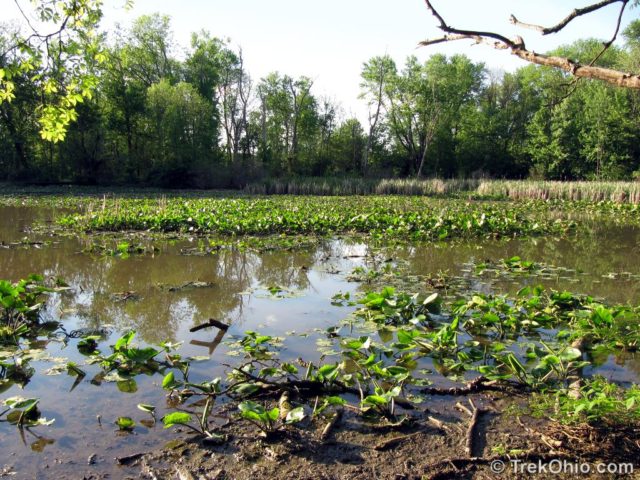
Boyer Nature Preserve is a small park (11.43 acres) with a small pond (the glacial kettle). However many animal species and over 200 plant species have made Boyer Nature Preserve their home. Let’s start by looking at what’s living in the pond.
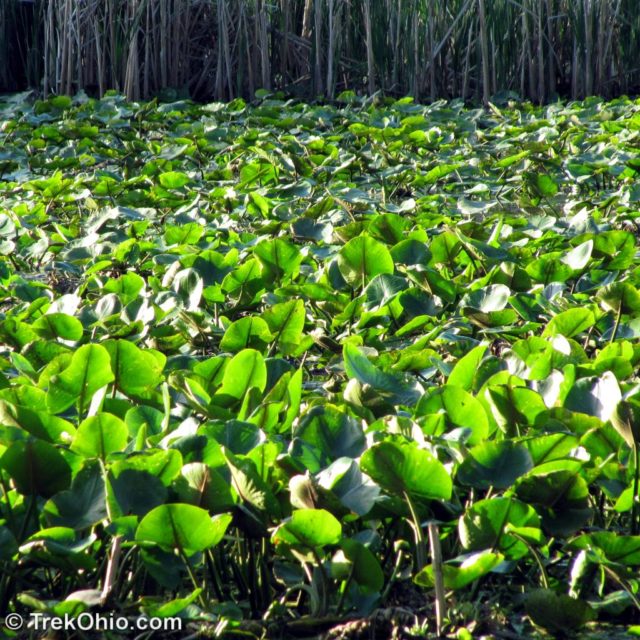
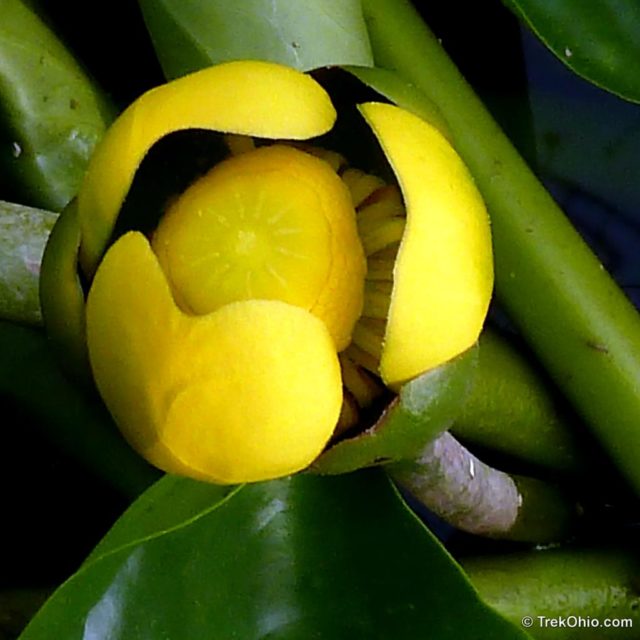
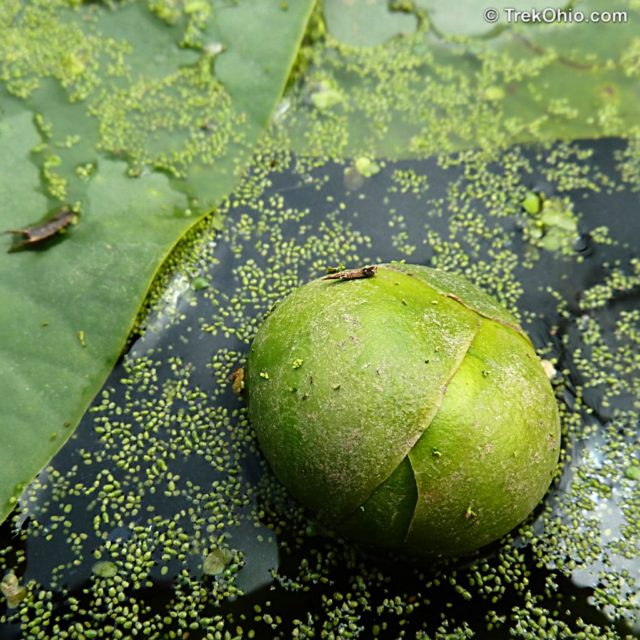
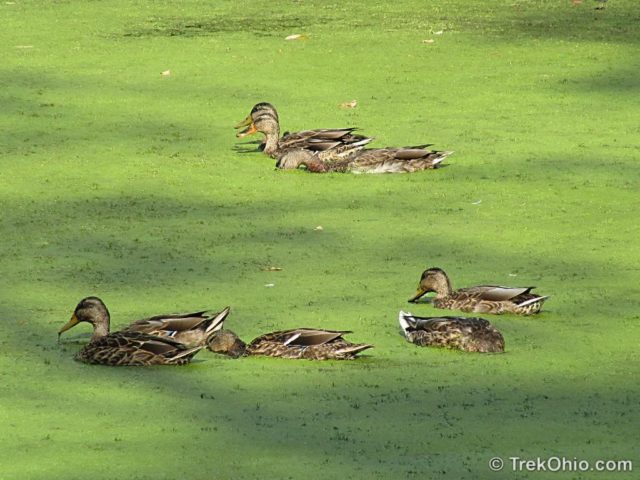
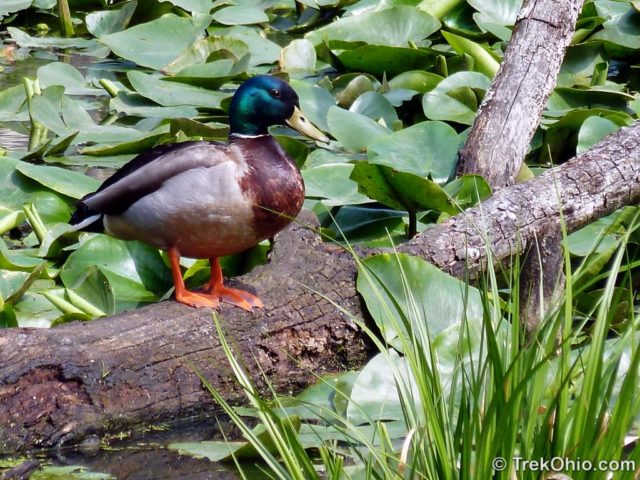
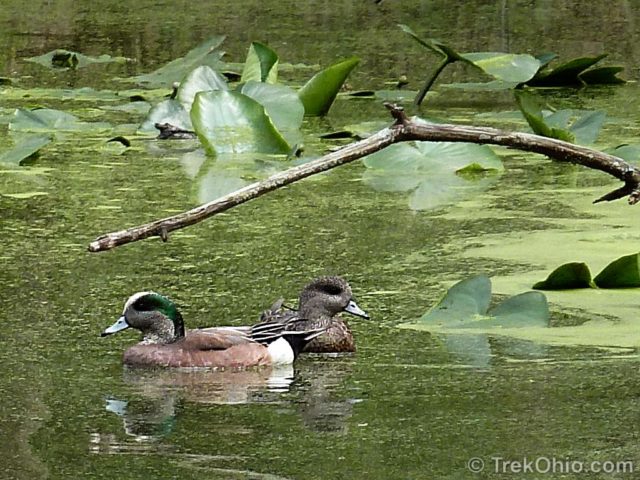
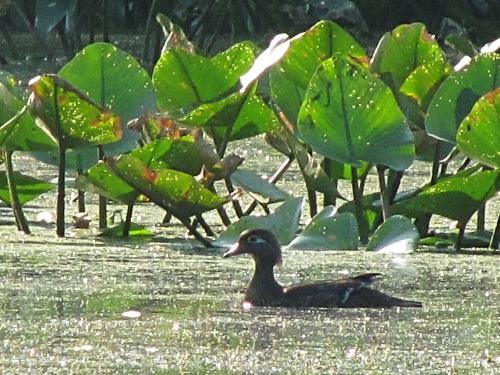
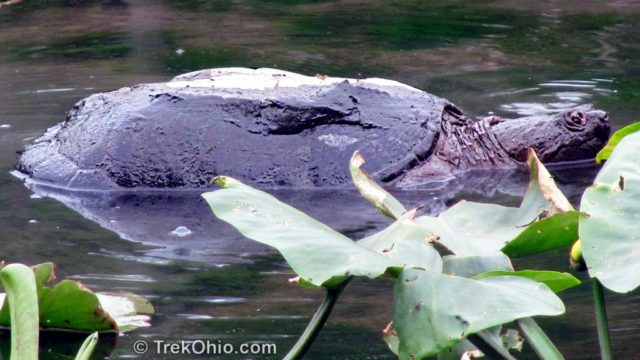
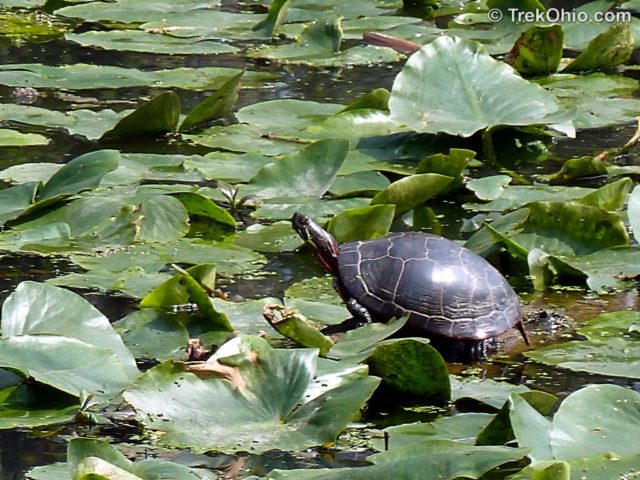
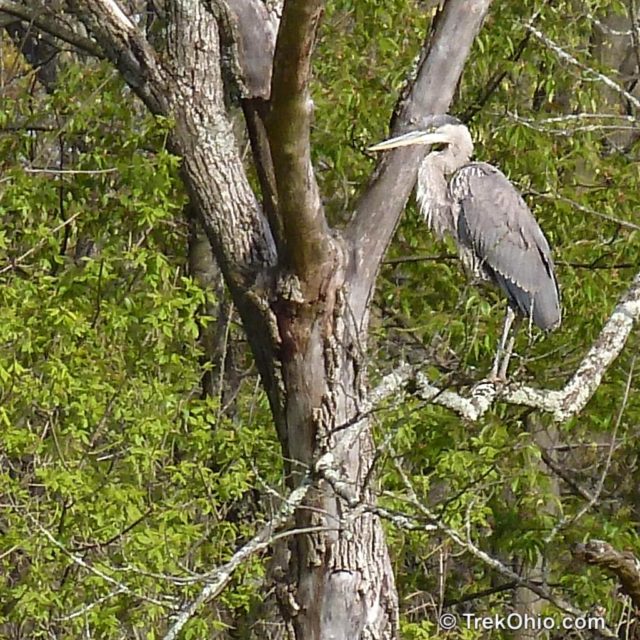
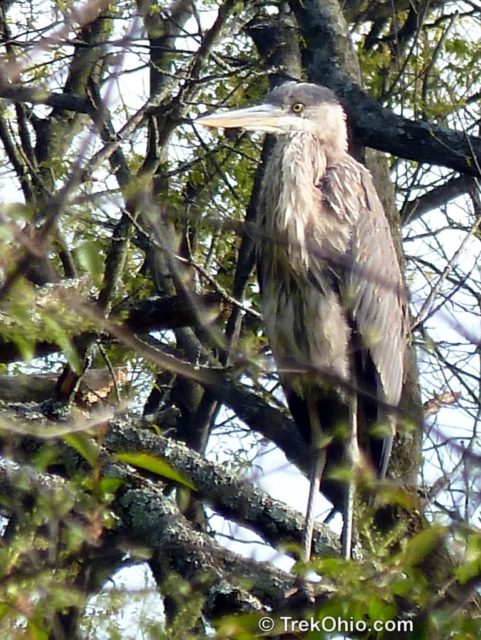
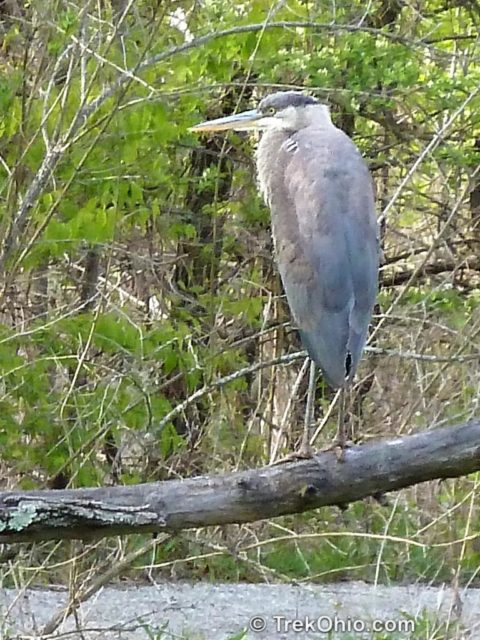
One of my first articles here, A Little Bit of Bayou in Central Ohio was about the bald-cypress swamp at Dawes Arboretum. I thought that it was unusual to have such cypress trees growing this far north. Imagine my surprise to discover them growing in the wild here at Boyer Nature Preserve.
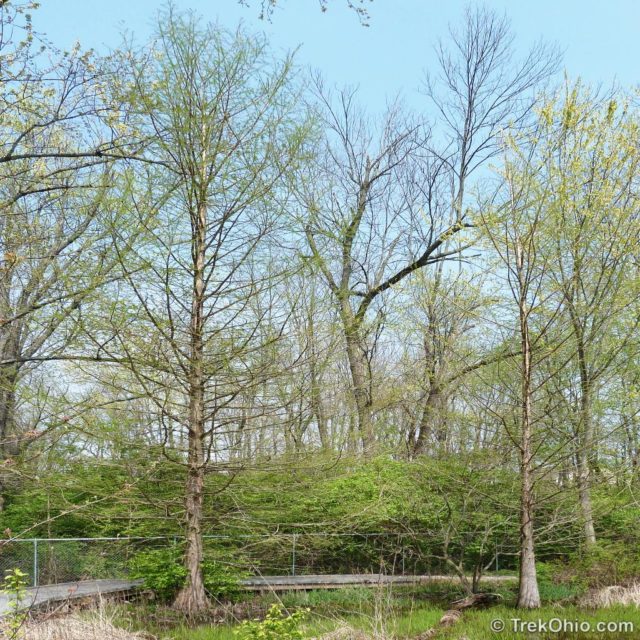
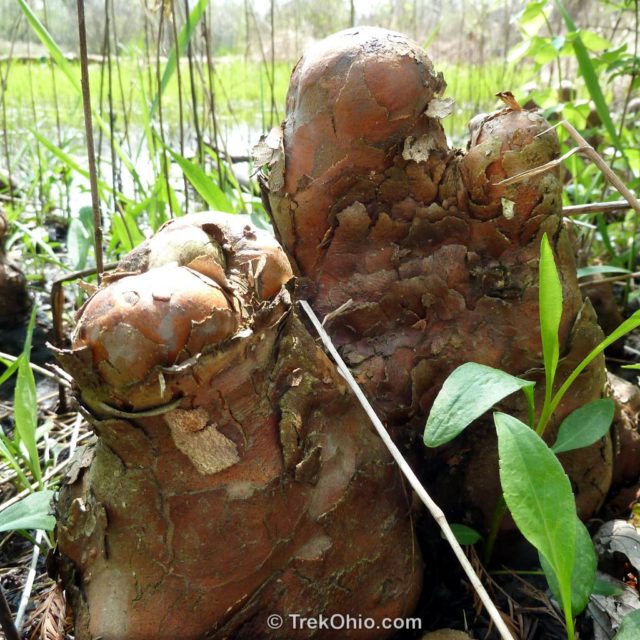
In addition to the small trail around the pond, there is also a small trail into the adjoining woods. That’s where I took the photo of the honey locust pod that has ended up on an interpretive sign at Klehm Arboretum and Botanic Garden (described here). When you look at the photos above, it is easy to forget how small this park is, or the fact that it’s located right in the middle of suburbia. So let me show you a wider view of the pond that I photographed in the winter after the leaves had fallen.
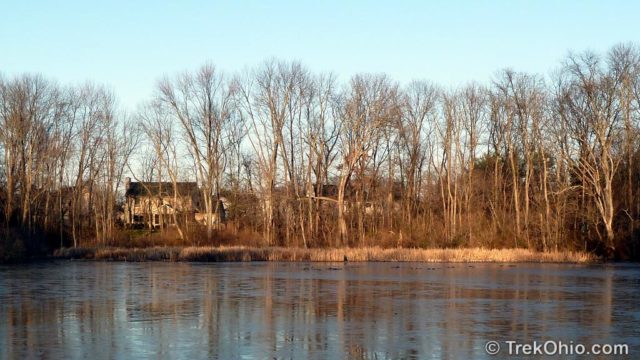
Because this park is right in the middle of suburbia, many people in the neighborhood come here to go for a walk. I often see people walking their leashed dogs (there are no signs saying whether dogs are permitted or not). The dog owners do a good job of cleaning up after their pets. People jog around the pond. Kids also ride their bikes through here. Bird watchers show up with their binoculars. I’ve included photos of waterfowl in this post instead of songbirds because waterfowl are larger and easier to photograph with a point-and-shoot camera. Nonetheless the preserve contains many species of woodpeckers and songbirds.
I want to close out by posting a photo of a sign that used to be installed near the pond. Some of facts that were posted on this sign appear in this article. The sign actually had way more information about the park than the city’s official description of the park as found in this PDF. However one of the downsides of being in the middle of a suburb is that someone succumbed to the temptation to vandalize it, so the sign’s not there now. If you’d like to read the sign, clicking on the photo below will show a larger version. If you right click on this larger version and select “View image”, you can see it in its full resolution that is large enough to be easily readable.
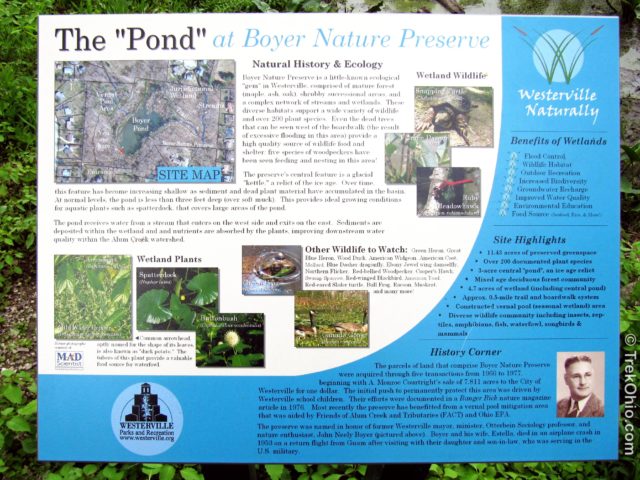
Additional information
- TrekOhio: Franklin County Parks & Nature Preserves — this is the county in which Inniwsood is located. Check out this page for official links for this park and information on nearby parks.
- TrekOhio: Ohio Geology in 10 Minutes or Less
Location
And here’s a map that shows where the park is located.
More on Franklin County
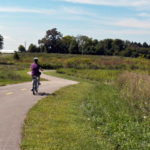
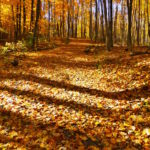
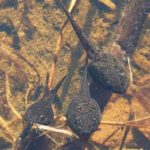
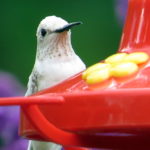
Hi Deb, I’m so happy to find this page! I’m the Outdoor Education Specialist for the City of Westerville Parks and Recreation Dept, and I’m creating scavenger hunts for our parks on an app for your smart phone. Boyer is a such
gem and I wanted to be able to share more information with visitors as they’re working through the scavenger hunt. So, I’ll be attaching this page to the scavenger hunt for folks to learn more! Thanks for taking the time to share Boyer with the rest of Ohio (and world)!
Hey there. love your blog. been to this preserve and love it. I live so close to it and never knew it was there until i found your site. Thanks for sharing I go there often now. very peaceful and serene.
Deb, thank you! It makes me happy to learn that you’ve discovered a place that you enjoy by reading one of our posts. 🙂
Hi Deb.
Well, I have seen in my youth some “Hiidenkirnu” glacial kettles in Finland. You awoke my interest and I found this page in English presenting Hiidenkirnu in Askola. The word Hiidenkirnu means translated word by word “Churns of Goblins”.
Potholes of Askola
Is it just this You mean?
Matti.
That’s so wonderful photo report. I especially enjoyed from photos presenting glacial kettle. To me it is something new, never seen.
Thank you, Sartenada! However after viewing your wonderful photos showing how the last ice age impacted Finland, I thought that Finland must have glacial kettles. I’m guessing that you’ve seen some where you live, but you just didn’t realize how they were formed. I tried to look up glacial kettles in Finland. If I understand correctly, they are called “hiidenkirnu” where you live. This page says that the Rokua esker (the first Geopark site in Finland):
I’m so impressed with Ohio after following your blog! And I love your bird photos…they’re so perfect. 🙂 Thanks so much for the photo of that unusual flower…I honestly never would have known there could be something like that, it IS awesome.
You know, Carol, I was talking to an online friend who lives in Japan. I am a big admirer of his photo blog. He told me that people take photos of the places that they love. So I think it’s possible to come to Ohio and not see the places that I’ve photographed, or not see them lovingly.
I was just looking back at the photos I posted about Knox Woods and Wolf Run. In my imagination, this is what the countryside would look like just outside the shire of the hobbits in Lord of the Rings. 🙂
Deb, yes, it is obvious that you just love nature…and I believe that is part of the reason your photographs are so stunning. You see what you see in its most glorious light. I’m a bit of the same with flowers. They become a study to me, with one on my desktop at all times…and seeing them in all their many stages of beauty. This is only to say that I understand exactly what you are saying. You do have a gift though, to be able to capture what you see in such beautiful images. 🙂
Beautiful photos and such interesting words. That “spatterdock” flower is incredible…I’ve never seen anything like that. 🙂 And of course I love all the bird and animal photos.
Thanks, Carol. I got the “spatterdock” name right off my photo of the interpretive sign that was later vandalized. It’s a shame that the park service apparently gave up on posting a new interpretive sign in this area.
The spatterdock flower is awesome. I haven’t touched the flower, but the petals look thick, stiff and waxy.
Although I didn’t post any “Ohio Geese” photos in the above article, would it surprise you to learn that there are a few there? This photo that I published earlier was taken in this pond.